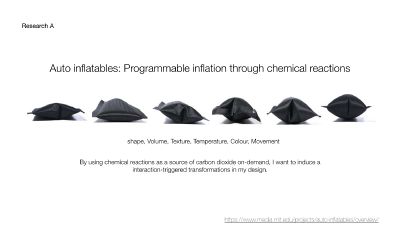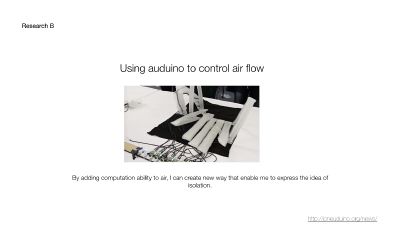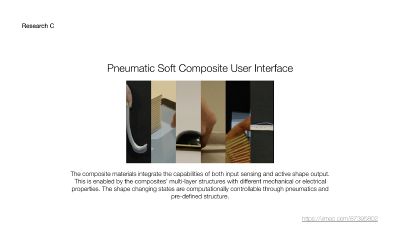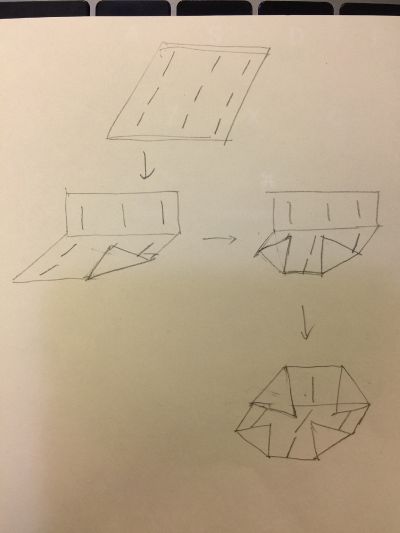No edit summary |
No edit summary |
||
| Line 1: | Line 1: | ||
==Public Media—Isolation—Propaganda== | ==Public Media—Isolation—Propaganda== | ||
<gallery caption= | <gallery caption="Public Media—Isolation—Propaganda"> | ||
File:屏幕快照 2018-04-04 下午3.28.17.png | File:屏幕快照 2018-04-04 下午3.28.17.png | ||
</gallery> | </gallery> | ||
Revision as of 11:21, 5 April 2018
Public Media—Isolation—Propaganda
- Public Media—Isolation—Propaganda
There is a big, invisible isolation between the truth itself and the information we obtain from public media. Public media somehow is a tool of propaganda. What is the isolation? Why it exists? Can it disappears?
Introduction
Public obtain information through kinds of public media, such as newspaper, books, broadcast, television, internet, lecture, etc. The publicity of public media is the main requirement and expectation of beings. This project mainly focus on public media in China, which has a strong relationship with the social right to know, basic way of social communication and basic mode of political operation [1]. As we know, public media should not be exclusiveness and class. However, what sound can be heard while others can not be, in fact, privilege class decide, they always represent the whole society in the name of public. Worldwide, country, party, interest groups, commercial profit of public media result in the concealment of media. So, there is a big, invisible isolation between the truth itself and the information we obtain from public media. Public media somehow is a tool of propaganda, in most cases, they prefer building ideological rather than tell the truth. In this project, based on the literatures about public media, the stories my families told me and comparing the news what I obtain when I was in China to abroad, using video, photography and literary essays show all relation things in a mixed media way. This installation uses the way of visual art try to explain who can be public media, who the public media represent, who they want to speak to, who accept the information, what is the isolation, why it exists, what can we do under this situation. It is not a strictly way to show the professional knowledge of media or the politic stuff, but as a particular way of thinking and composing documentation on installations.
Artists Work
- Walid Raad [2]
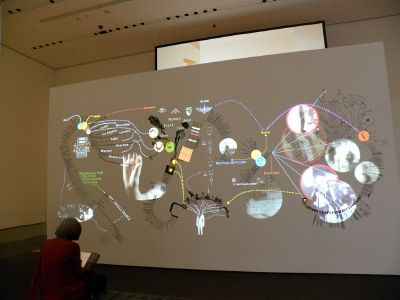 The installation and performance titled “Scratching on Things I Could Disavow” consists of several parts at the Museum of Modern Art, a computer projection or tableau as the artist calls it, which forms the backdrop of his performance. The largest and most complex component, is the wall projection “Translator’s Introduction. Raad’s narrative of the large tableau began with an account of the Artists Pension Trust, a real organization that signs contracts with artists who donate works to a privileged investment plan.
Walid Raad claims that everything he says is factual, but there are different types of facts: emotional, aesthetic, historical, psychological. But Raad’s real point is not this huge contemporary art collection, but the basis for the determination of value in contemporary art for such a fund. Who will buy the work and why? Financial investors need to have a basis for their decisions. He digs into its background and discovers that the tech workers of the parent company are former Israeli military intelligence officers. That company is owned by another company that combines risk management and algorithms: it analyzes data such as auctions, art language, and even color, in order to determine what affects the value of art.
The chilling result of Raad’s research is that the value of art is being determined by the use of a group of hedge fund experts in risk management. The sudden emergence of support for contemporary Arab art in the last ten years is embedded in this project. In addition to art work, the APT collects curators and art historians as advisors, who are well paid for their time. They create exhibitions and reassure investors of the value of the art. His work showed the process of his research, using different ways to show the complex contents.
The installation and performance titled “Scratching on Things I Could Disavow” consists of several parts at the Museum of Modern Art, a computer projection or tableau as the artist calls it, which forms the backdrop of his performance. The largest and most complex component, is the wall projection “Translator’s Introduction. Raad’s narrative of the large tableau began with an account of the Artists Pension Trust, a real organization that signs contracts with artists who donate works to a privileged investment plan.
Walid Raad claims that everything he says is factual, but there are different types of facts: emotional, aesthetic, historical, psychological. But Raad’s real point is not this huge contemporary art collection, but the basis for the determination of value in contemporary art for such a fund. Who will buy the work and why? Financial investors need to have a basis for their decisions. He digs into its background and discovers that the tech workers of the parent company are former Israeli military intelligence officers. That company is owned by another company that combines risk management and algorithms: it analyzes data such as auctions, art language, and even color, in order to determine what affects the value of art.
The chilling result of Raad’s research is that the value of art is being determined by the use of a group of hedge fund experts in risk management. The sudden emergence of support for contemporary Arab art in the last ten years is embedded in this project. In addition to art work, the APT collects curators and art historians as advisors, who are well paid for their time. They create exhibitions and reassure investors of the value of the art. His work showed the process of his research, using different ways to show the complex contents.
- Adelheid Mers
File:Mers_EC_Mandarin.pdf She devotes to visual art. On this diagram “Effervescent Condition”, she first created a text by interviewing the curator, Fang-Tze Hsu, and participating artists Nadav Assor, Florian Graf, Joshua Sampson and Yefeng Wang. Interviews were informal and lasted about one hour each. She allowed the conversations to move along, but also asked questions about the artworks for the exhibition, and how they resonate with the artists’ and curator’s extended practice. After a few days, she began to sort through the relations and images, and a diagram began to take shape. Extended design process used by a quick hand drawn sketch, using Photoshop, Illustrator, and modified images downloaded from the web and from her own collection of icons and pictograms. The final drawing is digital. [] In my own work, I try to use lines, circles and other geometry graphics to build relations among “public media”, “isolation” and “propaganda”. Using images, videos also gif to enhance the expressions.
Main Content
The diagram mainly consists of 3 parts. The first part describes the crucial and cardinal points of public media, who on earth control it and why this situation happened and can be continued for years. It is said that that main stream media in China is the “Throat and Tongue” of the government and Communist Party of China (CPC) [3]. Media is the mouth while government is the brain, the brain control the mouth to say everything which benefit them. So main stream media is a propaganda tool of the government. Among the examples, a anchorman of MSNBC said on the program “our job is to control exactly what public think.” what's more, it is the privilege class represents whole society in the name of public. The media focus on the government authority even though a certain leader. Masses’ sound is tiny. Also, media has there own intrigue, they always publish a shocking statement, a publicity stunt or a commercial exploitation to attract attention, proving a copper-bottomed circulation. This is a microcosm view of media public. The second part is the isolation. This part is a metaphor for the public media filters information before publish or show. It has strong concealment, exclusives and class. The third part is about propaganda. Introduce the main ways to propagate in China from 1950s to now. There are several cases to show what the new is not true, among the example, air pollution is a extremely serious problem in big cities in China, haze has appeared since 2003, however, the official media reported this ”news” in 2013. The haze was named fog during the 10 years. Another example,China joined WTO in 2001, the public media said that it was a great progress of reform and open, but the truth is, while some industries and group benefited, the basic interest of agriculture and farmers were excluded from this frame. It happens throughout the world. In the report of the American war in Iraq, it is a big affair when there were Us military casualties while the situation of tens of thousands of Iraqis has not been heeded. This diagram also use the method of visual art to build the complex logic relationships, enhance mental concept. It is characterized by free-flowing thought and serendipity. Things overheard are captured in sketchbooks, as lists and in open-ended image making. In this diagram, the color spectral from light blue to red represents the changing of information, start from the truth through a series of information processing, end with the message public finally get.
Reference
- Hui Wang, Yan Xu. 2018, Publicity of public media, China Academic Journal Electronic Publishing House
- “Walid Raad” is on view through Jan. 31; travels to the Institute of Contemporary Art, Boston, Feb. 24–May 30; Museo Jumex, Mexico City, Oct. 13, 2016–Jan. 14, 2017
- Chaoren Guo, 1997,Theory of Throat and Tongue.
11.6 Recommend links
- http://www.andinc.org/v4/industrian-pilz-pilzcontainer/
- http://www.reversibledestiny.org/
- http://www.ubermatic.org/
- http://www.darsha.org/artwork/
- http://www.nox-art-architecture.com/
- http://v2.nl/lab/expertmeeting
- http://files.flageorgia.org/hkurz/wiener/ow-1-us.htm
- https://vimeo.com/2995418
- https://vimeo.com/8702781
- https://www.media.mit.edu/projects/auto-inflatables/overview/
- http://pneuduino.org/news/
- https://vimeo.com/87395802
Description of my idea ——ISOLATION
Keywords: Isolation, Memory, Public, Interaction
Thinking about isolation
Isolation exists around us, even it is an important part of our life. Isolation can be misunderstanding, border, gap, wall…make people have a sense of distance even though face to face. However, it is not totally dark, people still can know the feel each other. On the other hand, isolation is not only a gap but also a wonderful thing, because it stands for something unknown or mysterious, like a secret. People always curious about the things that they do not know, even if it is may be dangerous. Exploration is exciting, sometimes it is can be a big surprise. https://en.wikipedia.org/wiki/Isolation
In my mind, isolation is a kind of feeling, not a specific thing, sometimes we can not know what happened, only can see the result of insolation, we misunderstand, we curious, we feel confused and excite. So I want to do an installation, which can show the two sides of “Isolation” to the public. It can bring a feeling of two sides of isolation to the public. It can remind the public’s memory of isolation. Maybe the public will give the installation a feedback what they are feeling and how they think about isolation.
Contents of isolation What can be an “isolation” Disabled, Culture, Generation gap, Gender, Character ……
What I what to make
Isolation gives us the feeling of vague, abstract and uncertain, I want to find something has similar features that I can use to express the isolation of my installation. I found Qi has some similar characters with isolation.
The researches
I want to use the way of chemical reactions and auduino processing to change the shape, movement, temperature, and the different colours and textures to enhance feelings of different “isolation”.
